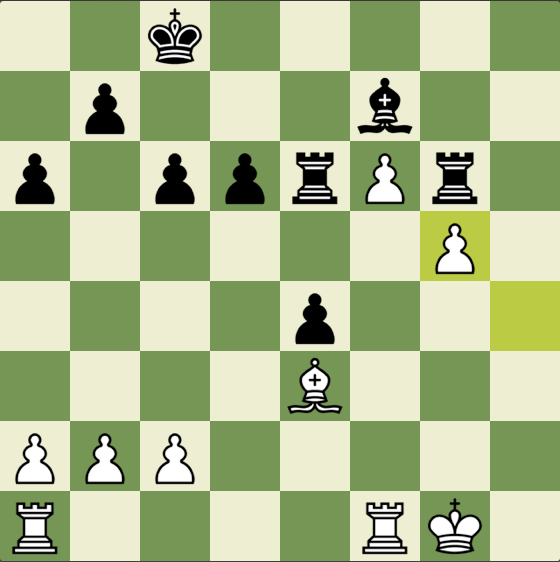Upon hearing the word sacrifice, most of us think about brutal sacrificial mating attacks, but that’s not always the case. Exchange sacrifices can be based purely on positional reasons in endgames. They can be a way out of a bad position, or they may be the best way to get winning chances.
How do you know that your exchange sacrifice is worth it? Obviously it all depends on your position, but I’d say that the following factors would be good indicators
- Afterwards your pieces will be well-placed (that’s obviously a plus!)
- Your opponent’s rook(s) is/are not active or will not have an easy time infiltrating
- Your opponent’s pieces aren’t so active in general
- Your position is relatively secure
- You have passed pawn(s) that your opponent needs to worry about
- Last but not least, the more pawns you have in return for the exchange, the better
Now I’m obviously not claiming that ordinary exchange-down positions are ok for you. No, no, no! A rook is better than a minor piece in most circumstances. And of course you have to calculate accurately, since you really can’t justify losing by force. Let’s look at a few examples.
At the recent U16 Olympiad, I did make a (good) exchange sacrifice.

I was black in this strange position. White has passed pawns on g5 and f6 that are blockaded but do tie up black’s pieces. Meanwhile, white’s bishop does a much better job blockading the g5-pawn. Black doesn’t have a clear plan of action here, and if white can get a rook to the h-file (say after Kf2 and Rh1), black’s position won’t be pleasant.
Taking everything into account, I decided to play 24… Re5! here, with the idea of sacrificing an exchange on g5. This is a good idea from a practical perspective. White’s f6-pawn will still be a thorn, but I’ll be able to take care of it by playing Kd7-e6. Besides that, the only realistic problem with black’s position is that white invades with a rook and takes my queenside pawns, which will become an issue but doesn’t seem to be too concerning.
While white is still the one pressing, this is a better scenario for black than if he waited around and let white proceed with his plans. In the game, I was able to successfully hold a draw after some adventures.
While the idea of sacrificing an exchange came to me naturally there, I’ve had some mishaps in the past. Take this example from 2014, when I was ~2250 USCF:

Again, I was black in another fairly strange position. Black has a pawn lodged on d3, but white has his a knight lodged on d6 in return. How to handle this? Black is in check and obviously has limited options. A tempting possibility here is to remove the knight from d6 by playing 19… Rxd6! 20.exd6 Nf5.

White’s life is far from easy here. If black could simply play Nxd6-e4, he’d be dominating. Since 20.Rc1 attacking the c5-pawn is simply met with 20… Kb6, white will probably play 20.e4 Nxd6 21.e5, where black has lots of compensation after 21… Ne4, Re8, Nf5, etc. This is because black has a solid blockade on the light squares, his d3-pawn is strong, and white’s rooks simply don’t have open files to exploit. While it’s not so bad for white, black is for choice.
Instead of that, I played 19… Kb6, which isn’t a bad move. It’s after 20.a5+ Kc6 21.Rc1 that I made my howler.

Here I should have also gone 21… Rxd6!. After 22.exd6 Kxd6, black will have a lot of compensation for similar reasons like above. Instead of that, I played 21… Rb8??, preventing Bxb4, but after 22.e4 I found myself in a lost position, since I won’t be able to save my c5-pawn. I went on to lose.
Looking at this game now, I’m totally shocked I didn’t sacrifice the exchange. The first time is ok, but the second time!?
Those two games had some similarities. Both were fairly strange positions full of imbalances, though they were also fairly closed positions in which rooks weren’t that powerful. It was also easier for me to establish a blockade after sacrificing the exchange than to play the positon “normally” in both situations.
Scanning through my games, I’m surprised how rare these positional exchange sacrifices are in my practice. This goes to show that yes, being an exchange up is usually a good thing, but there are situations in which a minor piece and a pawn are more useful than a rook.
This painful experience of mine from a couple years ago shows that a rook can truly be dominated.

I thought I was doing all right in this position, but not after I got hit with the strong sacrifice 33.Rxc8!. After 33… Rxc8 34.Nxf5+ Kf7 35.Ne4, black is in big trouble.

White’s knights are quite well-placed and powerful, especially compared with their black counterparts. Moreover, they’re attacking the d6-pawn. If it falls, black’s position will be in ruins. I therefore played 35… Rd8, but after 36.Ba5 Rd7, my rook is literally stuck. To be more precise, it’s totally dominated. I went on to lose this position.
Long story short: positional exchange sacrifices do exist and can be quite good in various situations. If it looks like you have a lot of purely positional compensation after an exchange sacrifice, it’s worth a shot!






















